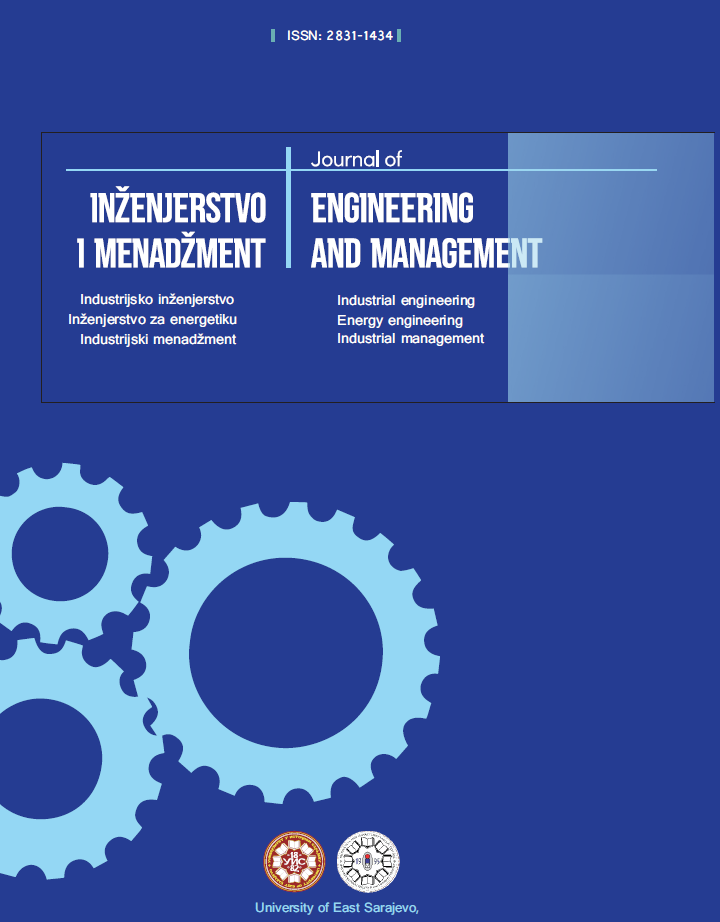Modelling and optimisation of power consumption and productivity in milling of thin-walled parts
DOI:
https://doi.org/10.7251/JEM2402001SAbstract
A high percentage of mechanical parts in the metalworking industry (automotive, medical, energetic sector, and etc.), refers to thin-walled structures with optimized shapes and dimension, which produce on high or semi batch production principle. Production processes management, in mentioned industry and production systems, requires the development of appropriate information technologies based automatic systems. Planning and control systems are based on computer-aided technologies. Basis of this system are mathematical-logical models commonly, which is quantitatively link between input process parameters and process performance indicators (output parameters). In this study, modelling of total power consumption and process productivity was performed. Total power consumption and the process productivity were modelled, as very important output indicators in efficient and sustainable production. The modelling is based on the experimental analysis of the machining process during machining of thin-walled parts made of C45E (AISI 1045) carbon steel. Modelling was performed using the least squares method, with the use of ANOVA statistical analysis for the purpose of defining the input factors significance. Depth of cut, milling width and feed per tooth were used as input cutting parameters. Input cutting parameters combined experimental analysed according to Taguchi experimental plan. Based on developed adequate and sufficiently accurate mathematical models, optimization procedure was performed. The goal of optimisation was to minimize the power consumption and maximise productivity.
